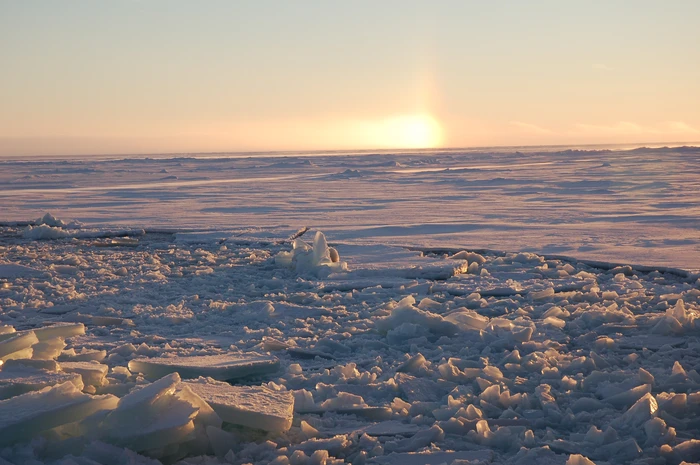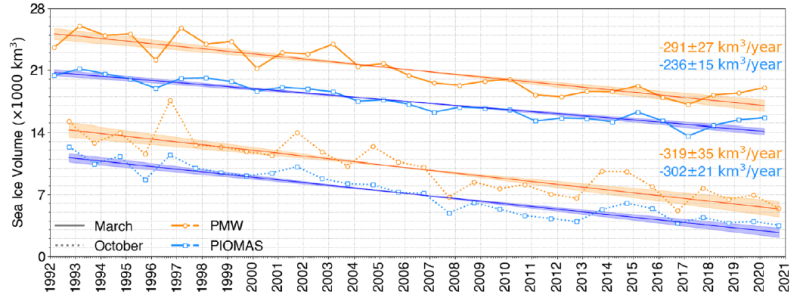The pack ice, formed by freezing seawater, covered most of the Arctic basin, most of the year, until the beginning of this century. However, since the end of the 1970s, the Arctic pack ice has been gradually melting, especially in summer, as revealed by satellite measurements of the ice cover using passive microwaves.

These observations show a reduction of more than 10%, per decade, in the summer surface area of the pack ice, equivalent to more than five times the surface area of France since 1979. This melting, reproduced by climate models, is attributed to CO2 emissions from human activities.
However, measuring the cover says nothing about the thickness of the ice, which would allow a better understanding of the melting, and especially the determination of the volume of the pack ice.
Estimates of sea ice thickness are obtained from space by altimeters (lidar and radar), but these observations are not available continuously over long periods ; and so far, only numerical simulations from physical models estimate the volume of Arctic ice, with an uncertainty of around 50%.

The study, in which the Laboratoire d’étude du rayonnement et de la matière en astrophysique et atmosphères - LERMA (Laboratory for the Study of Radiation and Matter in Astrophysics and Atmospheres) at Paris Observatory - PSL is notably involved, demonstrates the potential of passive microwave observations from satellites for estimating the thickness and winter volume of Arctic sea ice. The method is based on an artificial intelligence algorithm, trained on lidar ice thickness data, and takes advantage of the long time series of microwave observations.
The resulting ice thicknesses and pack ice volumes are consistent with simulations over the past 30 years : the two sources agree better than expected on ice volumes, and are close in terms of trends in pack ice volume and its changes from one year to the next.
Passive microwave satellite data therefore substantially reduce uncertainties about Arctic pack ice volume and trends, and should improve the accuracy of future pack ice forecasts.
__________________________________________________________
CNRS laboratories involved
- Laboratoire d’étude du rayonnement et de la matière en astrophysique et atmosphères (LERMA - Observatoire de Paris - PSL)
Tutelles : Observatoire de Paris - PSL / CNRS / CY Cergy Paris Univ / Sorbonne Univ - Laboratoire d’océanographie et du climat : expérimentations et approches numériques (LOCEAN - ECCE TERRA)
Trustees : CNRS / IRD / MNHN / Sorbonne univ.
